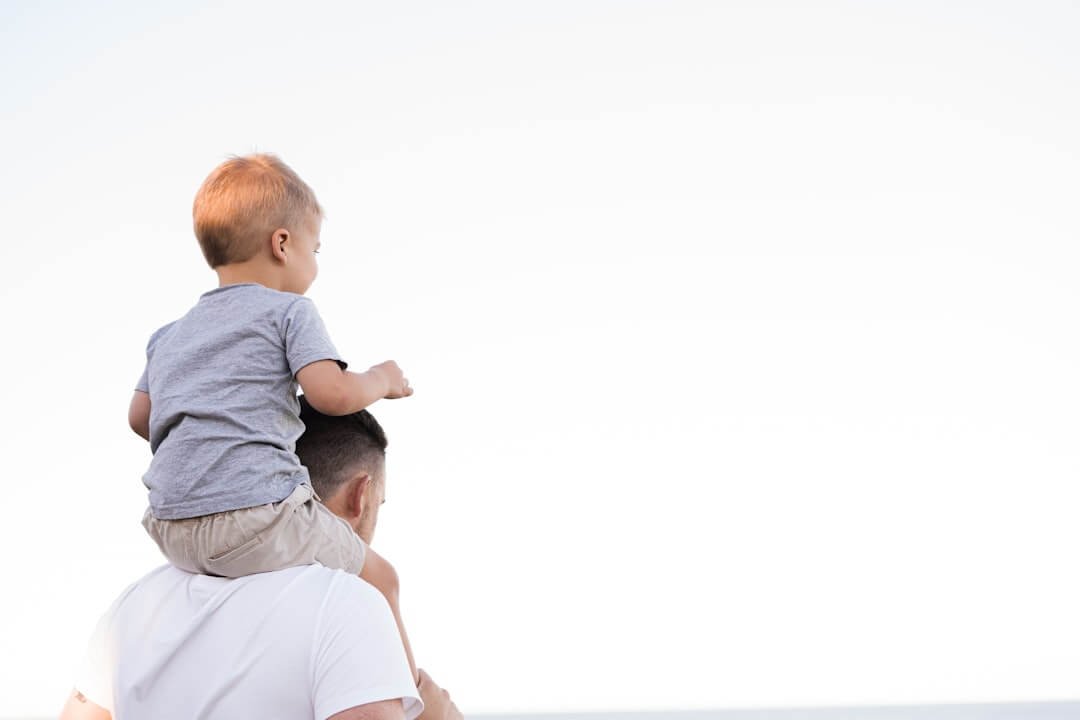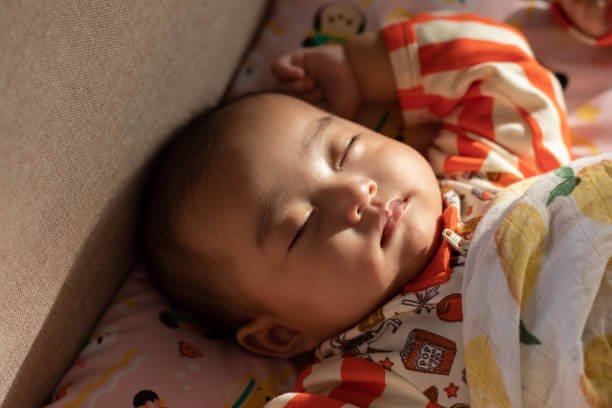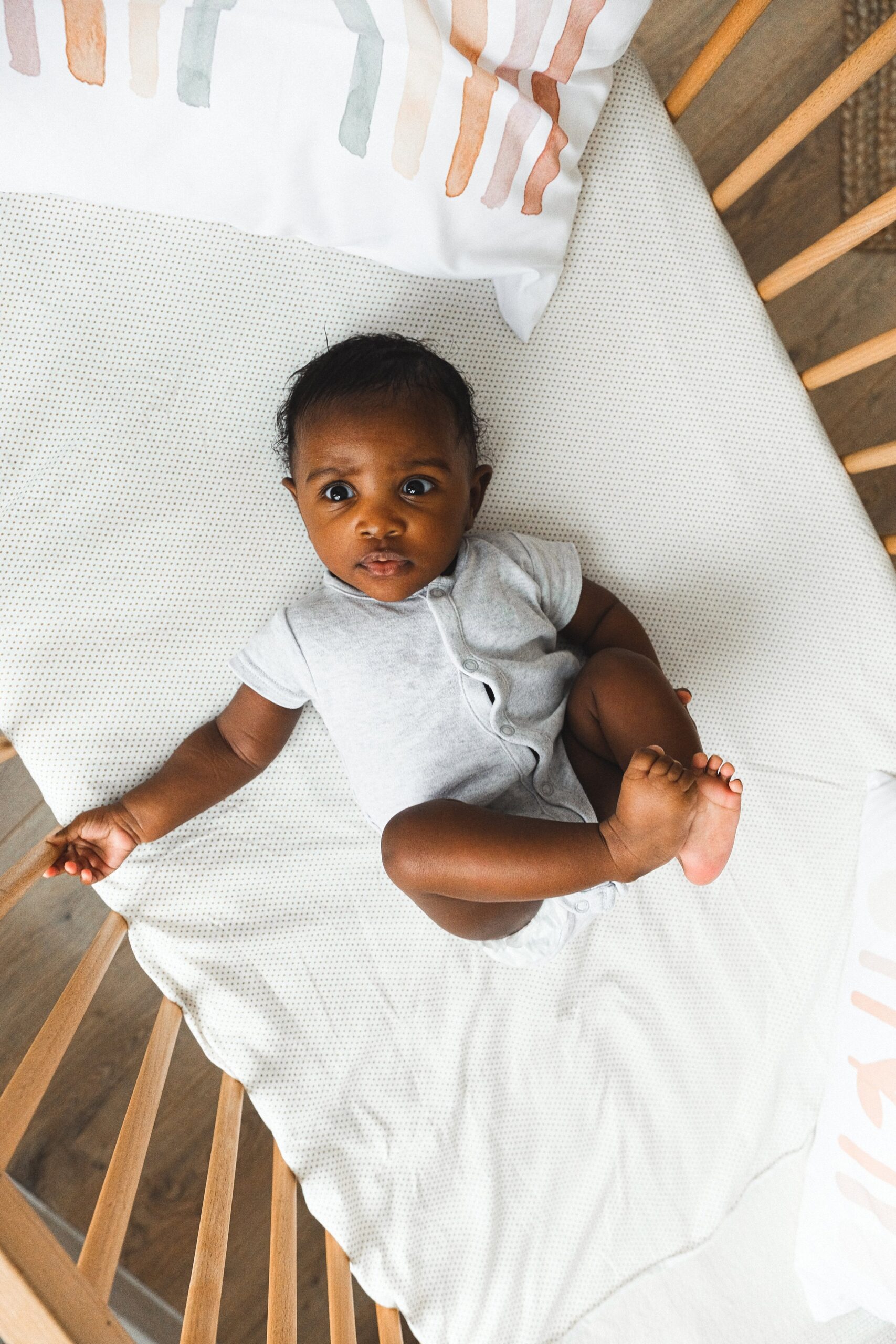I'm Rachael
Mom of 3 & Baby Sleep Expert with Big Sis Energy
& I’VE DONE ALL THE RESEARCH FOR YOU ALREADY.
Better sleep for the entire family
BROWSE COURSES
hey!
floor beds for babies and toddlers: everything you need to know about floor beds aka “montessori” beds
August 4, 2024
in this post:
In the U.S., the idea of a floor bed can seem very strange. As a society, we love the idea of babies being contained in a crib in the nursery and the idea of floor beds can raise a few eyebrows. However, it’s actually a very common way for families around the world to sleep and can have a huge number of benefits.
what are floor beds?
Floor beds are essentially low-frame beds. They are often called Montessori beds and are associated with giving children independence around their sleep by having a frame that is low enough for them to be able to get in and out of the sleep space themselves. Some families have the mattress on the floor directly which is where the name ‘floor bed’ comes in but most opt for a little space underneath for ventilation. Floor beds can be used solely for the infant, or they can be for a parent or child or, depending on how big the sleep space is, for the whole family!

why would you want to use a floor bed?
There are many reasons why families would opt for using a floor bed. I have an Instagram Post you can read through here but here are some of the more common reasons:
-
Many infants who are used to bedsharing and co-sleeping have a hard time with the crib and a floor bed can allow them to transfer to their own sleep space. It is an easier transition to make than to an unfamiliar crib.
-
The temperament of infants can have a huge impact on the success of crib transfers. For some babies no matter what you do or try they simply wake when you put them in a crib. A floor bed allows you to lie with, nurse, and comfort your infant and then roll away without waking them. Many families say that not having to do crib transfers gains them much more sleep!
-
Floor beds allow you to work on independent sleep as you move between different sleep associations. You can lie with them and sing, pat, cuddle, etc if you are trying to move away from rocking, bouncing, and nursing.
-
Floor beds also offer an alternative to the crib if there are mobility issues. Some families (or pregnant mothers) are unable to physically lift their infant in and out of the crib and a floor bed alleviates the need to do this.
-
Some infants are very active at nighttime and rolling into the barriers of the crib wakes them up and causes more frequent night wakings. Lots of my followers contact me to say that their baby is now doing the longest stretches of sleep they have ever done after they made the switch to a floor bed and their infant has more space and freedom.
when should you use a floor bed?
Floor beds can be used from birth if they are set up safely but there is no magic age to stop or start just whatever works for your family. The Montessori method says to use a floor bed once your baby has outgrown the newborn bassinet but if you scroll through my floor bed highlight on Instagram you will see the huge variation in timings of when infants begin using floor beds. Most health advisors recommend room sharing until the infant is at least 6 months old, but a floor bed can also be used in your bedroom so long as it is set up safely. Some of the more common reasons given for beginning the use of a floor bed are:
-
Parents want to move on from bed sharing or co-sleeping but the crib is not an option. This is especially helpful after 9-12 months if your infant has never slept in a crib before. Many report that a transition to a floor bed is a lot smoother because it more similarly replicates the parent’s bed.
-
The crib is no longer working out for multiple reasons, transfers, restrictions, baby climbing out, etc.
how to use a floor bed safely?
There are two major safety aspects to consider when setting up a floor bed. These are room safety and floor bed safety. When opting for a floor bed you need to view the room as the sleep space and make sure the whole area is safe.
The things you MUST consider when thinking about the safety of the room are:
-
Securing the furniture to the walls
-
No blind cords or wires accessible to your infant
-
Making sure all power sockets are covered
-
Any choking hazards from toys etc are removed
-
No heavy items hanging on the walls or shelves
-
Gate or alarm at the door if they can reach the handle, or gated off hallway or stairway
- video monitor
This isn’t to say the room has to be completely bare. Inside my Crib + Floor Bed Guide are lots of real-life photos for inspiration. You can also see my IG highlights with a couple more floor bed setups.
Next to consider is the safety of the floor bed itself:
-
Make sure you use a crib mattress (safest option for under 2 years) or a very firm twin/full size mattress
-
Keep all sides of the mattress away from the wall to avoid entrapment between mattress and wall (which can be deadly)
-
Make sure the sheet is tightly fitting (for babies under 12 months especially)
-
No pillows until age 2, no bumpers, no loose blankets or duvet, no weighted sleep sacks or blankets
-
A footless sleep suit is a safe option for warmth as it ensures they don’t trip if they get up.
You can read more about the safety aspects here.
transitioning to a floor bed
Once you have made the decision to move your infant to a floor bed and you have set up the room and floor bed safely, then begin working on the transition. As with any change in sleep, you will want to make sure you build up positive sleep associations in the space. Play there, spend time there together, and read stories together there during the day. Creating these positive connections in your baby’s mind will make the transition smoother. However, it is important to note that no one sleep change is the magic bullet and transitions take time. Although lots of people do contact me astounded at how successful and quickly a floor bed has changed their family’s sleep! So, fingers crossed!
what if they keep getting out of bed?!
One thing that parents worry about the most when they decide to go for the Floor Bed is that their child is going to get up and get out of bed or try to escape their room. I promise this does not happen as much as you may think. Mostly your little one isn’t going to be partying all night or roaming the house or raiding the fridge. They’ll be sleeping, calling out for you, or making their way to your bedroom at most.
If you do find your little one getting up a lot, though, a good starting place is to get curious. Are they seeking connection with you or going through a period of separation anxiety? Are they afraid of something in their room? Have they had enough time to practice their new sleep space, and are there boundaries enforced with consistency? Are they actually tired enough to fall asleep and stay asleep or is there a potential red flag getting in the way of restful sleep?
I know it can be frustrating when your child keeps getting up at night. My Better Bedtimes Guide is a good resource for toddlers who are struggling with the bedtime routine. If you have a younger baby or you’re noticing they are getting up all throughout the night and it’s not strictly a bedtime battles issue, I have a few tips for this:
- Black out curtains. If the room is very dark, your child is less likely to be tempted (or able!) to get up and explore.
- Video monitor. If you can see your child getting up and moving around, you can go in and help them get back into their beds.
- Door alarms or gates. I never recommend locking a child in a room for safety reasons. However, you may install a little alarm or a gate at their door if it’s really not safe for them to leave their bedroom at night. If you can’t or don’t want to do this, you may gate off other areas of the home instead so that they are limited in where they can go should they get up and leave the room without your knowledge at night.
- Practice what to do if they wake up. If you practice and role play, they are more likely to do what they’ve practiced. You can practice having them yell “mama!” if they wake up at night, or practice them getting out of bed and going across the hall to your room for example. You can also practice having them fall back asleep unassisted if they are old enough (more of that in my Tender Transitions Course- details below!).
- Use an attachment object. A blankey or “lovey” if your child is over 12 months can be a nice way to get them feeling safe and secure in their own sleep space overnight.
- Water bottle close by. Sometimes kids get up because they are thirsty! Keep a water bottle by their bed so they can help themselves.
For some children, like those who are neurodivergent, you may need to take some additional precautions. Use your best judgement here or consult with your care team.
need more help?
If you would like more information about deciding whether a floor bed is right for you, setting up a floor bed, and managing the transition then a more detailed guide can be found in The Ultimate Crib and Floor Bed Guide.
For step-by-step on how to move away from cosleeping or bed sharing to your child’s own bed, you’ll want to check out the Tender Transitions Course.
What’s the difference between these two resources?
The Crib + Floor Bed Guide has everything you need to get started on independent crib or floor bed naps + nights with your little baby, transitioning out of a bassinet or swaddle, and more. Includes PDF guides, FAQ, and Audio Lessons for learning on the go!
The Tender Transitions Course is for those who need a little extra support with moving on from bed sharing with an older baby or toddler, or who are really stuck in particular patterns or sleep associations that aren’t working anymore. This course is best for babies 9+ months and toddlers, especially for those who have only bed shared since birth and reject a crib entirely. Includes 3 Video Modules and a PDF guide.
Other Posts You May Find Helpful:
Moving from a Crib to a Toddler Bed
binge reads
We think you'll love these
You deserve to the
baby stage, not just "survive it."
And you DON'T have to sacrifice your values, ignore your instincts, or force yourself to follow a method you don't align with just to get your baby back to sleep.
I’m here to help you create a restful, sustainable sleep environment that honors both your baby’s needs AND your own (without the stress OR the guilt!) because, no, you don’t have to choose between the two.
enjoy!
BABY SLEEP COURSES →
BABY SLEEP CONSULTS →
Wish you could help your baby sleep better without resorting to sleep training? Download my FREE guide to a good night’s sleep and learn 8 simple, science-backed tips for supporting your child’s needs.
Traditional sleep training methods don’t have to be your solution to better sleep.
SLEEP TRAINING ISN’T THE ONLY WAY TO GET GOOD SLEEP
Hey, I'm Rachael and Hey, Sleepy Baby is for parents who want to get their nights back, without sleep training their babies.
NO ONE TOLD US POD
explorING the untold truths of parenting


